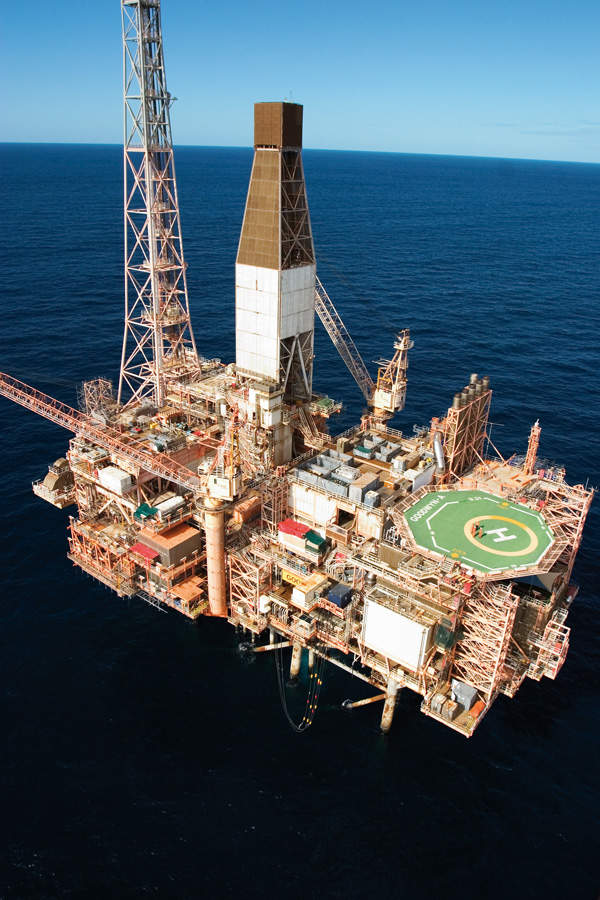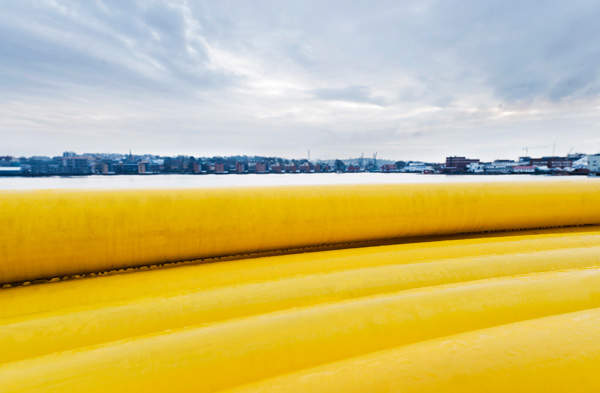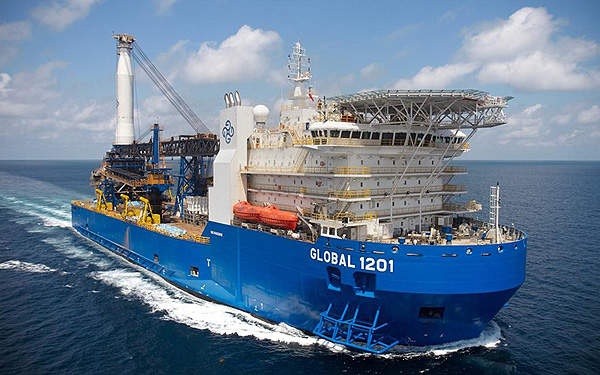Phase I of the Greater Western Flank (GWF) development project in Australia was sanctioned by the North West Shelf Venture (NWSV) partners in December 2011. The $2.45bn phase one project aims to extend hydrocarbon supply to the Karratha Gas Plant and endorse the venture’s ongoing marketing attempts for domestic gas and LNG. The project began commercial production in December 2015.
The GWF area is located approximately 130km north-west of Karratha in Western Australia and constitutes 16 undeveloped fields. It is estimated to hold up to three trillion cubic feet (tcf) of recoverable gas and up to 100 million barrels (MMbbl) of recoverable condensate.
In the first phase, the Goodwyn GH and Tidepole fields were developed as tie-backs to the existing Goodwyn A (GWA) platform. The remaining fields will be developed in subsequent phases at later stages.
With a working interest of 16.67%, Woodside Energy is the operator of the GWF Phase I project. The other five participants in the project, namely BHP Billiton Petroleum, BP Developments Australia, Chevron Australia, Japan Australia LNG (MIMI) and Shell Development, have equal stakes in the project.
Infrastructure for Woodside’s Goodwyn GH and Tidepole fields
Goodwyn GH and Tidepole fields are located in water depths of approximately 230ft to 425ft within the lease area WA-5-L on the North West Shelf. Tidepole was discovered in 1971, while Goodwyn was discovered in 1972.
A total of five subsea production wells were drilled within the two fields, including three in Tidepole and two in Goodwyn GH. These wells are tied back to the GWA production platform through a 16km-long production pipeline measuring 16in in diameter.
The fields were developed using inherent reservoir pressure with minimal aquifer support to limit the formation of produced water. Well stream flows were regulated by installing subsea facilities at each well head.
The project also covered minor modifications to the GWA platform, which included additional pipework, replacement of manual and automated valves, modernisation of chemical system and additional control functions.
Fluids from the production pipeline are brought onboard the production platform through a retrofitted riser pipe. At the platform, the gas / condensate is initially treated in a high pressure train and then sent to a compression train.
The compressed gas is transported to the Karratha Gas Plant for processing by using the existing facilities.
The new infrastructure allows Woodside to introduce the remaining fields in the GWF area in a phased manner. As per the company’s environmental submission, the phase one development has a field life of 25 years.
Goodwyn A production platform on Australia’s North West Shelf (NWS)
Commissioned in 1995, the GWA production platform was the second platform installed as part of the NWS development project. The platform is located in lease WA-5-L, about 135km north-west of Karratha, in water depths of roughly 430ft and stands approximately 955ft tall.
The platform has the capacity to produce 32,000t of gas and 11,000t of condensate each day. It is designed to handle up to 30 production wells. A total of 137 workers can be accommodated onboard the platform.
Contractors for the Western Australian GWF offshore project
In January 2012, Australia’s subsea contractor Fugro-TSM was awarded a subsea installation contract worth $97.7m for the GWF Phase I project. Fugro-TSM engaged its dynamically positioned multirole vessel, Southern Ocean, to complete the project.
Houston-based technology solutions provider (for the energy sector) FMC Technologies was contracted in January 2012 to design, manufacture and supply subsea production systems for the project.
The $150m contract included the supply of six subsea production trees, six wellheads, two manifolds, subsea and topside controls and flowline connection systems.
Installation of a production pipeline from Goodwyn GH and Tidepole fields to the GWA platform was carried out by Global Offshore, a wholly-owned subsidiary of Technip. Deepwater derrick pipelay vessels Global 1200 or Global 1201 were deployed for offshore installation.
Electro-hydraulic steel tube umbilicals (EHU) were manufactured and supplied by Aker Solutions. Brownfield services to support the GWF project were provided by Transfield Worley.





